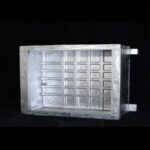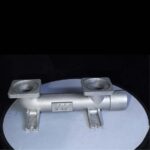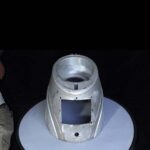"Aluminum Castings With Gun Metal Inserts"
Specifications for aluminum castings with gun metal inserts are crucial to ensure the integrity, functionality, and compatibility of the finished product. Here’s a detailed outline of potential specifications:
OVERVIEW
- Aluminum Alloy Selection:
- Choose an aluminum alloy suitable for casting with properties such as good fluidity, thermal conductivity, and compatibility with gun metal inserts.
- Commonly used alloys include A356, A380, or specific alloys designed for casting with inserts.
- Gun Metal Insert Material:
- Specify the material composition and properties of the gun metal inserts, typically composed of bronze or brass alloys.
- Ensure compatibility between the aluminum casting and the gun metal insert in terms of thermal expansion, corrosion resistance, and mechanical properties.
- Dimensional Accuracy:
- Tight dimensional tolerances to ensure precise fit and alignment between the aluminum casting and the gun metal insert.
- Specifications for insert location, depth, and interference fit requirements.
- Insert Placement and Design:
- Design the casting mold to accommodate the placement of gun metal inserts during the casting process.
- Ensure proper gating and riser design to prevent defects and achieve uniform filling around the inserts.
- Surface Finish:
- Specify the desired surface finish for both the aluminum casting and the gun metal inserts to meet functional and aesthetic requirements.
- Surface treatment options may include shot blasting, polishing, or plating for enhanced durability and appearance.
- Mechanical Properties:
- Define target mechanical properties for both the aluminum casting and the gun metal inserts to ensure compatibility and performance under load.
- Specifications for tensile strength, yield strength, hardness, and wear resistance may be required.
- Corrosion Resistance:
- Ensure that both the aluminum casting and the gun metal inserts exhibit adequate corrosion resistance to withstand exposure to environmental elements and operating conditions.
- Specify corrosion-resistant coatings or treatments as needed to extend the service life of the components.
- Assembly Requirements:
- Specify assembly methods and procedures for inserting and securing the gun metal inserts into the aluminum castings.
- Ensure proper bonding or mechanical retention to prevent loosening or detachment during service.
- Quality Control and Inspection:
- Implement quality control measures to verify the integrity of the casting and the proper installation of the gun metal inserts.
- Conduct inspections, including visual, dimensional, and non-destructive testing, to detect defects and ensure conformance to specifications.
- Documentation:
- Prepare comprehensive documentation including material certificates, inspection reports, quality control records, and assembly instructions.
- Include detailed drawings or CAD models specifying dimensional, material, and assembly requirements for the aluminum castings with gun metal inserts.
By adhering to these specifications, manufacturers can produce high-quality aluminum castings with gun metal inserts that meet the functional, aesthetic, and performance requirements of various applications, including machinery, equipment, and architectural components.
For More details & Information










